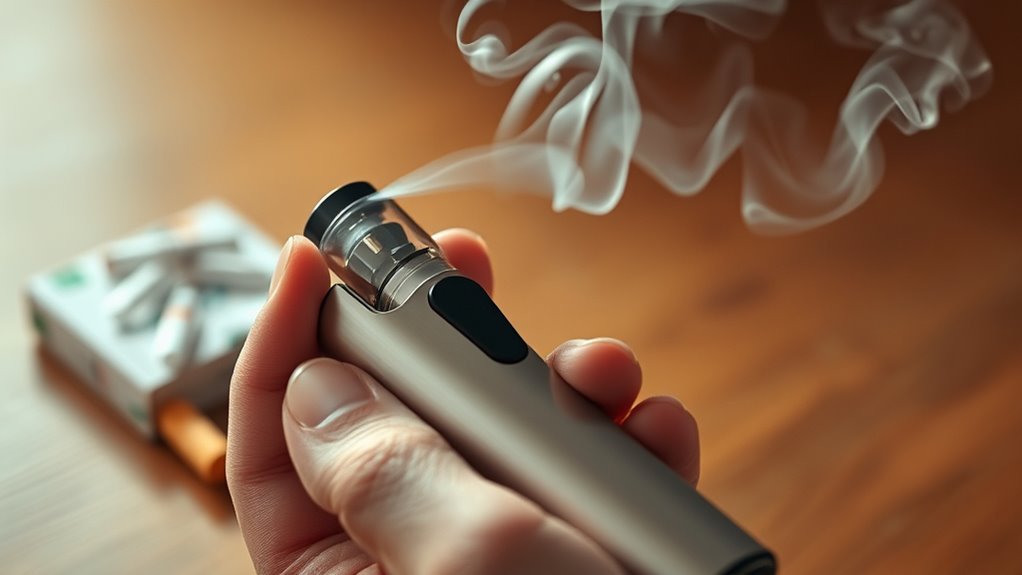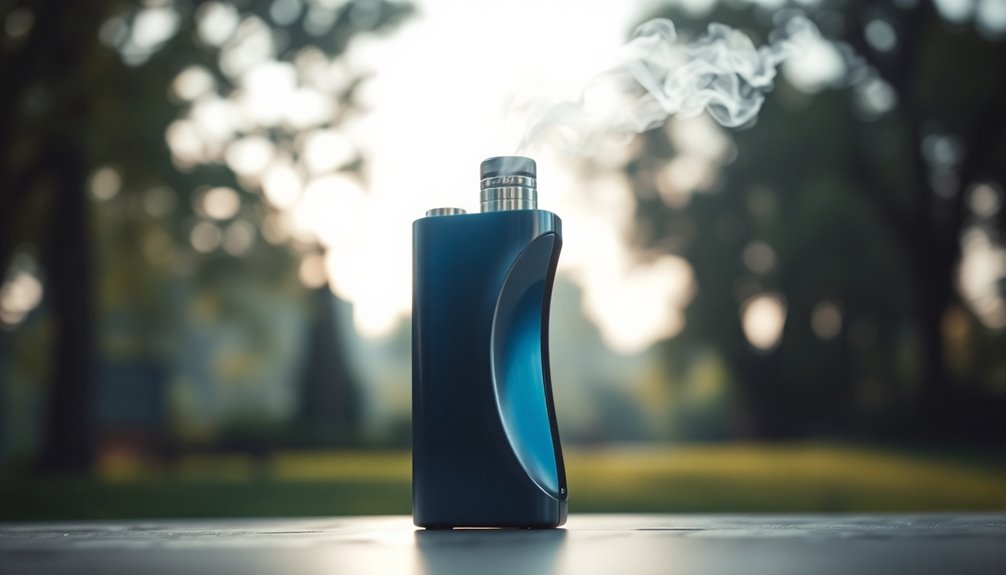Understanding nicotine withdrawal is key to managing your cravings and irritability. As your body adjusts to the absence of nicotine, you’ll likely experience anxiety and physical symptoms. Vaping can provide a less harmful way to shift away from traditional cigarettes, allowing you to gradually reduce your nicotine intake while satisfying cravings. With the right support and routines, you can effectively navigate this journey to better health and resilience. Discover more strategies to ease your path to quitting.
Key Takeaways
- Nicotine withdrawal symptoms include irritability, anxiety, and cravings, signaling the body’s adjustment to the absence of nicotine.
- Recognizing withdrawal symptoms empowers individuals to manage their addiction and maintain focus on quitting goals.
- Vaping offers a less harmful alternative, allowing for gradual tapering of nicotine levels while satisfying cravings without harmful chemicals.
- Developing healthier habits and routines, along with support from loved ones, enhances the likelihood of successfully managing withdrawal.
- Engaging in mindfulness and activities can help distract from cravings, reinforcing commitment to quitting and leading to improved health.

When you decide to quit smoking, understanding nicotine withdrawal is essential to your success. Nicotine addiction can create a powerful hold on you, making the process of quitting feel overwhelming. Withdrawal symptoms occur because your body has grown accustomed to the presence of nicotine. When you stop, your body reacts to the absence of this substance, leading to various physical and psychological symptoms. Recognizing these symptoms is a critical aspect of addiction management and behavior change.
You might experience irritability, anxiety, or cravings that make it challenging to stick to your decision. These feelings are completely normal and a sign that your body is adjusting. Understanding what to expect can empower you to manage these symptoms better. You’ll need to prepare yourself for the mental and physical challenges ahead. Staying informed about the withdrawal process helps you remain focused on your goal of quitting smoking.
Irritability and cravings are normal signs of adjustment; staying informed can help you manage these challenges effectively.
One effective tool in your journey could be vaping. Many people have found that e-cigarettes provide a less harmful alternative while still delivering nicotine. This can ease the transition by allowing you to taper off nicotine levels gradually. Vaping might satisfy your cravings without exposing you to the harmful tar and chemicals found in traditional cigarettes. If you choose to vape, make sure you find a product that meets your needs and aligns with your goals of reducing nicotine dependency.
Behavior change is a gradual process, and it often involves trial and error. You might find that vaping helps you manage cravings, making quitting feel less intimidating. As you gain control over your nicotine intake, you’ll be able to develop healthier habits. Focus on what works best for you, and don’t hesitate to seek support from friends, family, or support groups. They can provide encouragement and share their experiences, making your journey easier.
Incorporating new routines into your daily life can also support your addiction management. Engage in activities that distract you from cravings, such as exercise, hobbies, or mindfulness practices. This will not only help you cope with withdrawal but also reinforce your commitment to quitting smoking. Remember, every step you take toward quitting is a victory, no matter how small. Embrace the journey, and you’ll emerge stronger and healthier.
Frequently Asked Questions
Can Vaping Completely Eliminate Nicotine Withdrawal Symptoms?
Vaping can’t completely eliminate nicotine withdrawal symptoms, but it can help in withdrawal management. If you’re struggling with nicotine dependency, switching to vaping may reduce cravings and discomfort. It allows you to control your nicotine intake, gradually decreasing it over time. While it might not wipe out all symptoms, many find that vaping eases the progression, making it a useful tool in your journey toward quitting nicotine entirely.
Are There Any Long-Term Effects of Using Vape Products?
Using vape products can lead to long-term health risks that linger like shadows in your lungs. While you might think you’re avoiding traditional cigarettes, the addiction potential of vaping isn’t negligible. Research indicates that prolonged use can affect your cardiovascular health and respiratory system, creating a web of complications. It is crucial to weigh these risks carefully, as the allure of vaping may cloud your judgment about its safety over time.
How Does Vaping Compare to Traditional Smoking?
Vaping generally carries fewer health risks compared to traditional smoking, primarily because it produces fewer harmful chemicals. However, it still has addiction potential due to nicotine content. While many believe vaping can help reduce the harm associated with smoking, it’s important to recognize that it’s not risk-free. You might find that switching to vaping lessens some health concerns, but staying informed about the potential risks is essential for making the best choice for your health.
Is Vaping Safe for Non-Smokers?
Vaping’s not considered safe for non-smokers. Even though it’s often seen as a less harmful alternative to smoking, it still poses health risks, including potential lung damage and exposure to harmful chemicals. Social perceptions are shifting, and many view vaping as trendy, but you should be cautious. Just because something seems safer doesn’t mean it’s risk-free. It’s best to avoid vaping altogether if you don’t smoke.
Can I Use Vaping as a Permanent Smoking Alternative?
You can use vaping as a smoking alternative, but it’s not without risks. While it might seem safer than traditional cigarettes, the health risks associated with vaping can’t be ignored, and its addiction potential remains significant. Many find themselves shifting from one dependency to another, rather than quitting altogether. If you’re considering this switch, weigh the pros and cons carefully, and remember it’s essential to prioritize your overall health and well-being.
Conclusion
In steering the challenges of nicotine withdrawal, it’s clear that finding a supportive alternative like vaping can make a world of difference. By providing a satisfying way to manage cravings, vaping might just help you turn over a new leaf. While it’s not a one-size-fits-all solution, it can ease the shift and support your journey to a smoke-free life. Remember, every step you take brings you closer to breaking free from nicotine’s grip.










